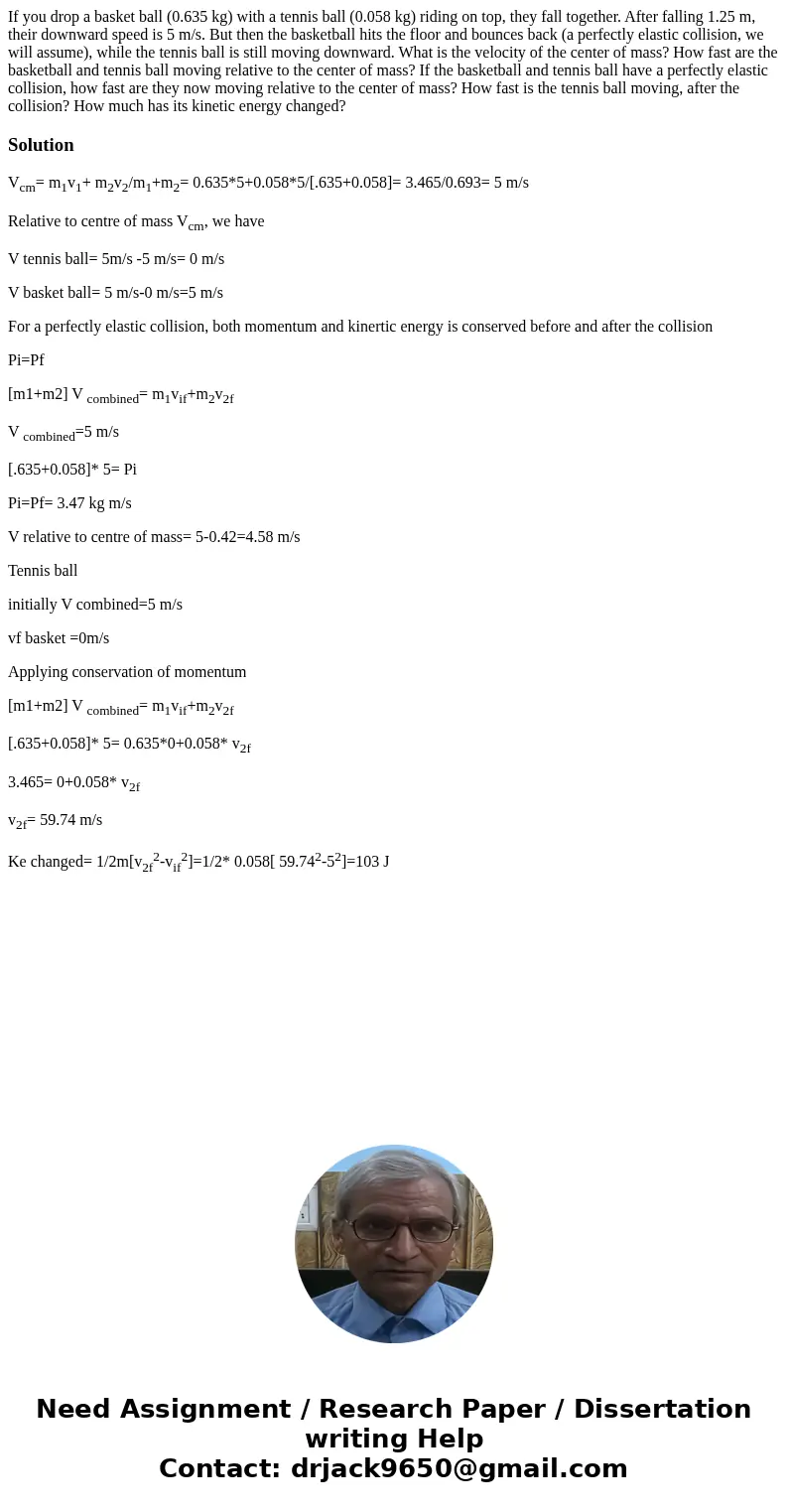If you drop a basket ball 0635 kg with a tennis ball 0058 kg
If you drop a basket ball (0.635 kg) with a tennis ball (0.058 kg) riding on top, they fall together. After falling 1.25 m, their downward speed is 5 m/s. But then the basketball hits the floor and bounces back (a perfectly elastic collision, we will assume), while the tennis ball is still moving downward. What is the velocity of the center of mass? How fast are the basketball and tennis ball moving relative to the center of mass? If the basketball and tennis ball have a perfectly elastic collision, how fast are they now moving relative to the center of mass? How fast is the tennis ball moving, after the collision? How much has its kinetic energy changed?
Solution
Vcm= m1v1+ m2v2/m1+m2= 0.635*5+0.058*5/[.635+0.058]= 3.465/0.693= 5 m/s
Relative to centre of mass Vcm, we have
V tennis ball= 5m/s -5 m/s= 0 m/s
V basket ball= 5 m/s-0 m/s=5 m/s
For a perfectly elastic collision, both momentum and kinertic energy is conserved before and after the collision
Pi=Pf
[m1+m2] V combined= m1vif+m2v2f
V combined=5 m/s
[.635+0.058]* 5= Pi
Pi=Pf= 3.47 kg m/s
V relative to centre of mass= 5-0.42=4.58 m/s
Tennis ball
initially V combined=5 m/s
vf basket =0m/s
Applying conservation of momentum
[m1+m2] V combined= m1vif+m2v2f
[.635+0.058]* 5= 0.635*0+0.058* v2f
3.465= 0+0.058* v2f
v2f= 59.74 m/s
Ke changed= 1/2m[v2f2-vif2]=1/2* 0.058[ 59.742-52]=103 J

 Homework Sourse
Homework Sourse